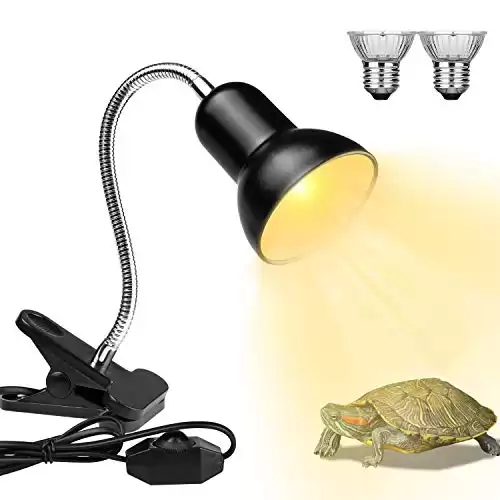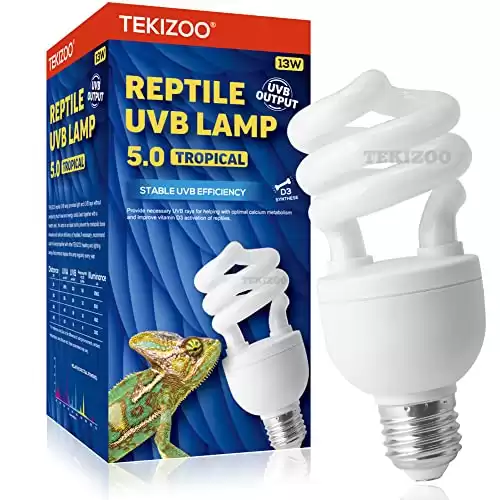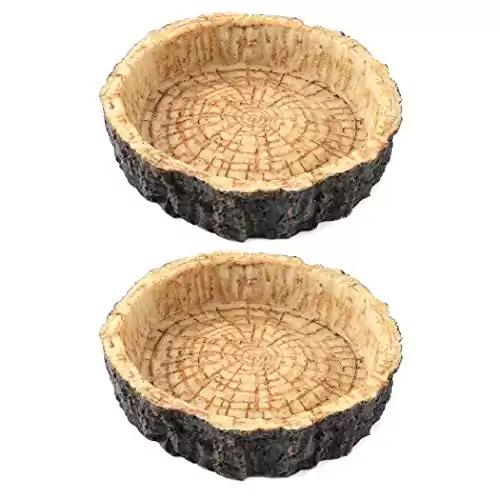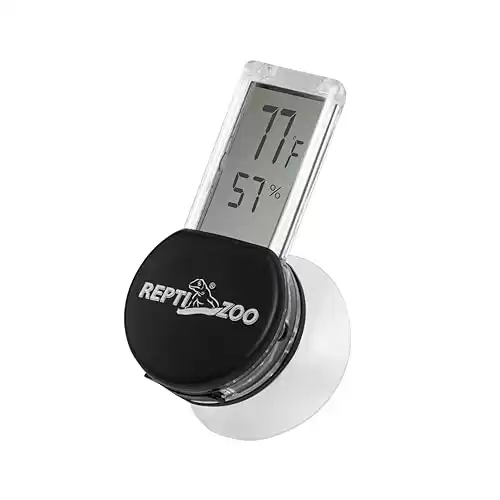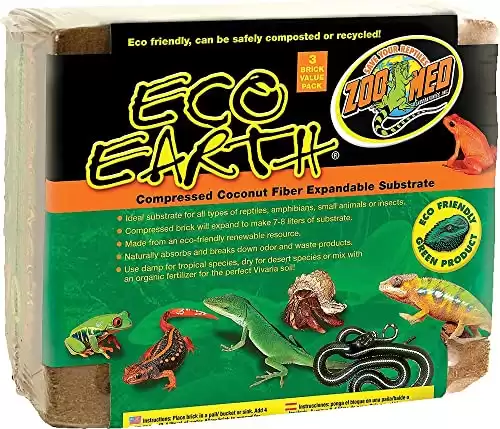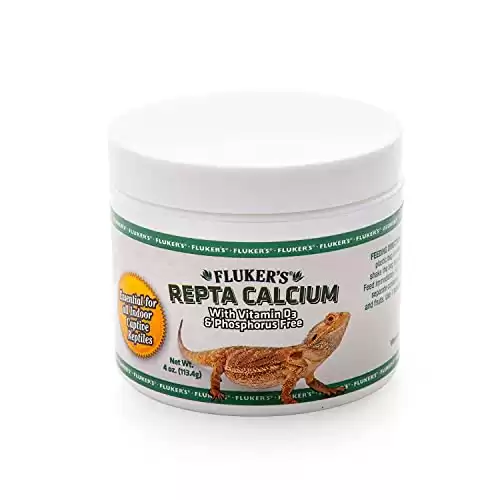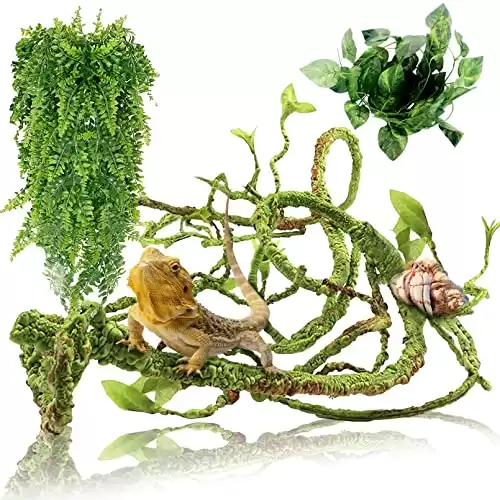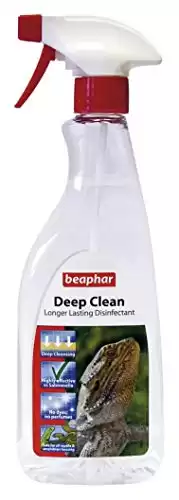Pink leopard geckos are a beautiful and unique morph of the leopard gecko. They’re characterized by their pink body color, pale eyes, and reduced spotting. These striking reptiles are relatively low-maintenance and make great pets for both novice and experienced reptile keepers.
Leopard geckos are known for their naturally occurring color variations, including yellows, oranges, and even albinos. Over the years, breeders have developed various color morphs by selectively breeding geckos with desirable genetic traits, such as pink or reddish coloration, which are referred to as “pink leopard geckos” due to their unique appearance.
This article explores the mesmerizing world of these charming pink geckos, shedding light on what makes them a delightful addition to the reptile-keeping community.
Description of Pink Leopard Geckos
The term “pink leopard gecko” isn’t a recognized scientific classification for a distinct subspecies or morph of leopard gecko (Eublepharis macularius). Rather, the concept of a “pink leopard gecko” typically refers to a selectively bred morph or color variation of leopard geckos that exhibit pink or reddish hues.
Their bright colors and captivating appearance are probably why they’ve become so popular among seasoned gecko owners and hobbyists alike. So, whether you’re the former or latter, you’ll find these pet reptiles as vibrant as they are intriguing.
Sometimes pink and lavender leopard geckos are grouped together as one type of morph.
Characteristics of Pink Leopard Gecko
Below are a few things you should know about the mesmerizing pink leopard gecko:
- Hardy: Are hardy and resilient, making them less prone to health issues when compared to some other reptiles.
- Docile: Known for their calm and docile nature, which means you can handle them with relatively little fuss.
- Nocturnal: Are more active in the evening and night when you’re sleeping and doze off during the day when you’re at work.
- Longevity: Can generally live for 15-20 years or more when cared for properly.
Subspecies of Pink Leopard Gecko
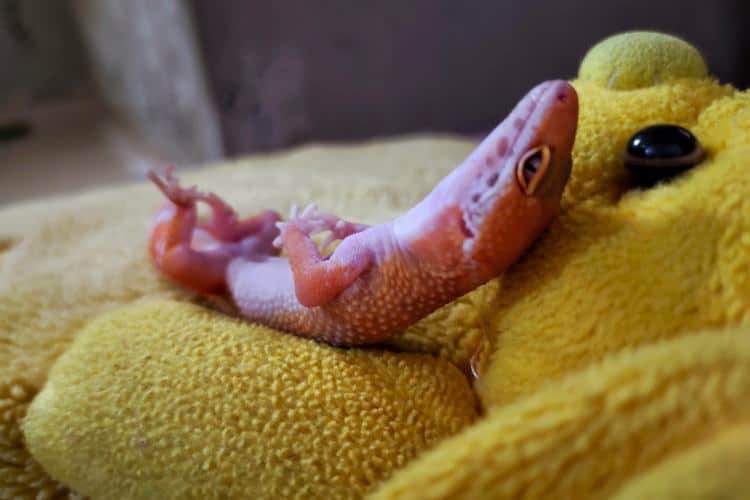
The term “pink leopard gecko” refers to a selectively bred morph or color variation within the species Eublepharis macularius, rather than a distinct subspecies. Thus, there are no recognized subspecies of pink leopard geckos.
That said, there are pink morphs or color strains, such as “High Yellow,” “Tangerine,” “Blood,” and “Raptor.” These are often referred to as “pink leopard geckos” due to their rosy or reddish tones.
Color Morphs of Pink Leopard Geckos
Breeders have developed different morphs within the species of leopard geckos to emphasize visually appealing pink or reddish color variations.
Basic Colors of Pink Leopard Geckos
The term “pink leopard gecko” is often used to describe leopard geckos with pink or reddish hues in their skin pigmentation, such as these basic color variations:
- Rosy Pink: This deep shade of bright pink coloration on their body is often combined with dark spots or bands and a white tail.
- Peachy Tones: Peachy or salmon-colored skin gives these cold-blooded reptiles a warm, attractive appearance.
- Reddish Hues: Reddish hues tend to make these morphs more vibrant and eye-catching.
- Pattern Variations: The pink coloration is often accompanied by distinctive broken patterns, such as black spots, stripes, or bands.
- Deep Orange Morphs: Various color morphs can produce geckos with deep orange skin tones with a carrot tail, and are often considered a subset of the border category of pink leopard geckos.
- Citrine Leopard Geckos: A relatively new morph, having first been bred in 2019 that’s the result of crossing a pink leopard gecko with a tremper albino leopard gecko.
Captive Care for a Pink Leopard Geckos
Keep these tips in mind if you’re thinking about getting one of these adorable creates:
Housing Requirements
One of the striking features of leopard geckos in general and pink ones specifically is that they’re quite small. So, they don’t need massive enclosures, which makes housing them more manageable.
Keep your pink reptile’s enclosure layout relatively simple. The main requirements should include a secure enclosure, proper temperature gradients, a suitable lighting setup, and multiple hiding spots.
Diet and Health Care
Feeding a pink leopard gecko follows a diet and routine similar to that of other leopard gecko morphs. Leopard geckos are insectivores, which means their diet consists primarily of insects. Here’s a bit of insight as to what to feed your pink leopard geckos and how often.
- Offer a variety of appropriately sized live insects like crickets, mealworms, waxworms, and dubia roaches.
- Juvenile leopard geckos under 6 months should be fed daily. Adult geckos can be fed every 1–3 days.
- Dust the insects with a
calcium and vitamin D3 supplement at every other feeding to preventcalcium deficiency. - Always make sure your pet gecko has access to a shallow dish of fresh, clean water.
Common Illnesses

Captive pink leopard geckos, like other leopard gecko morphs, are generally hardy and resilient when provided with proper care. However, they can still be susceptible to a few common health issues, such as:
- Metabolic Bone Disease (MBD)
- Respiratory Infections
- Skin Problems
- Digestive Issues
- Stomatitis
- Eye Problems
Leopard Geckos in the Wild
As mentioned above, the bright pink or reddish hues of pink leopard geckos don’t occur naturally in the wild but are rather a result of selective breeding by reptile breeders.
Yet, if you’re interested in learning about leopard geckos in the wild, below is a quick overview of their natural habitat, diet, behavior, and breeding habits.
Natural Habitat
In their natural habitat, leopard geckos are distributed in regions of Pakistan, Afghanistan, and parts of India, and they exhibit coloration that helps them survive in their natural surroundings. The variation in appearance and coloration is usually limited to the natural diversity within the species and doesn’t include pink or similarly striking color morphs.
Diet
Leopard geckos in the wild feed on a variety of small invertebrates, including crickets, locusts, beetles, and other arthropods. They’re opportunistic hunters and will forage for food during the evening and night, taking advantage of the cooler temperatures. They rely on their keen sense of smell and sight to locate and capture prey.
Behavior
Leopard geckos are primarily nocturnal creatures. They’re most active during the night and spend their days burrowing or hiding in rock crevices to avoid the scorching desert heat and escape predators.
Another fun fact about these intriguing reptiles is that they’re ectothermic, meaning they rely on external heat sources to regulate their body temperatures. In the wild, they bask in the sun to warm up and retreat to their burrows to cool off.
Breeding
Here are some interesting facts about the breeding habits of leopard geckos in the wild:
- Leopard geckos breed during the spring and early summer months when temperatures are warmer and food is more abundant.
- Males initiate courtship by approaching females and engaging in a series of distinctive behaviors like head bobbing, tail-waving, and vocalization.
- After mating, the female will dig a burrow in the ground or find a hidden, sandy, or loamy location, which provides a suitable environment for incubation.
- Leopard gecko eggs are typically left buried in the substrate for several weeks and unattended by the female.
- Once the eggs hatch, the hatchlings emerge from the ground. They’re typically independent from birth and must fend for themselves in the wild.
Final Thoughts
Whether you’re an experienced keeper or a newcomer to the reptile-keeping hobby, pink leopard geckos make delightful pets.
Their rosy hues stand out as a captivating and visually striking variation of this quirky, easy-going type of leopard gecko. Plus, they’re easy to care for, low-cost, and will add some color and amusement to your life.


